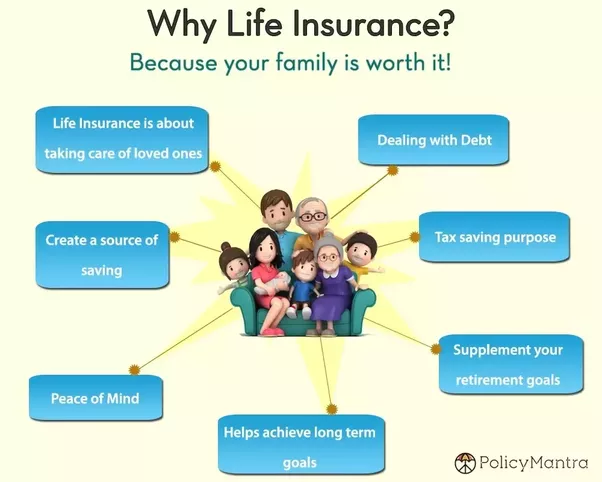Fascination About Pacific Prime
Wiki Article
Not known Facts About Pacific Prime
Table of ContentsThe 7-Minute Rule for Pacific PrimePacific Prime for BeginnersUnknown Facts About Pacific PrimeThe Single Strategy To Use For Pacific PrimeThe smart Trick of Pacific Prime That Nobody is Talking About

This is since the information were accumulated for a period of solid economic efficiency. Of the estimated 42 million individuals that were uninsured, almost about 420,000 (regarding 1 percent) were under 65 years old, the age at which most Americans end up being eligible for Medicare; 32 million were adults in between ages 18 and 65, around 19 percent of all adults in this age team; and 10 million were youngsters under 18 years of age, about 13.9 percent of all children (Mills, 2000).
These quotes of the number of persons uninsured are produced from the yearly March Supplement to the Existing Population Study (CPS), performed by the Census Bureau. Unless or else kept in mind, nationwide estimates of people without medical insurance and percentages of the populace with different kinds of protection are based on the CPS, one of the most widely utilized source of estimates of insurance protection and uninsurance rates.
Not known Factual Statements About Pacific Prime
:max_bytes(150000):strip_icc()/terms_i_insurance_FINAL_-3556393b3bbf483e9bc8ad9b707641e4.jpg)
Still, the CPS is especially helpful since it produces annual estimates reasonably rapidly, reporting the previous year's insurance policy protection approximates each September, and since it is the basis for a regular collection of quotes for greater than twenty years, enabling analysis of patterns in protection gradually. For these factors, in addition to the extensive use of the CPS in various other studies of insurance policy protection that exist in this report, we depend on CPS price quotes, with constraints kept in mind.

The estimate of the variety of without insurance individuals broadens when a population's insurance standing is tracked for several years. Over a three-year period starting early in 1993, 72 million people, 29 percent of the U.S. https://www.cheaperseeker.com/u/pacificpr1me. population, lacked coverage for at least one month. Within a solitary year (1994 ), 53 million individuals experienced at least a month without coverage (Bennefield, 1998a)
Six out of every ten without insurance grownups are themselves employed. Although working does enhance the chance that one and one's household participants will have insurance coverage, it is not a guarantee. Even participants of households with two permanent wage earners have virtually a one-in-ten opportunity of being without insurance (9.1 percent without insurance rate) (Hoffman and Pohl, 2000).
Get This Report on Pacific Prime
New immigrants make up a considerable proportion of people without medical insurance. One analysis has associated a significant section of the current development in the size of the united state without insurance populace to immigrants who arrived in the country between 1994 and 1998 (Camarota and Edwards, 2000). Current immigrants (those who concerned the United States within the previous four years) do have a high rate of being uninsured (46 percent), but they and their youngsters account for just 6 percent of those without insurance across the country (Holahan et al., 2001).The partnership in between medical insurance and access to care is well established, as recorded later in this chapter. The partnership in between wellness insurance coverage and health and wellness end results is neither direct neither straightforward, a substantial professional and wellness services research study literature links wellness insurance policy coverage to improved access to care, better quality, and enhanced personal and populace wellness standing.
Levels of evaluation for analyzing the results of uninsurance. This discussion of medical insurance coverage concentrates mainly on the united state population under age 65 since essentially all Americans 65 and older have Medicare or various other public insurance coverage. It concentrates particularly on those without any health insurance coverage for any size of time.
The 7-Second Trick For Pacific Prime
The troubles faced by click here for more info the underinsured remain in some respects similar to those faced by the without insurance, although they are normally less extreme. global health insurance. Uninsurance and underinsurance, nevertheless, include clearly various policy problems, and the techniques for resolving them might vary. Throughout this study and the five records to follow, the main emphasis is on persons without any medical insurance and hence no assistance in spending for healthcare past what is available via charity and safeguard establishments
Medical insurance is a powerful aspect affecting receipt of care due to the fact that both individuals and physicians respond to the out-of-pocket price of services - https://pacificpr1me-2.creator-spring.com. Health insurance, nonetheless, is neither essential neither sufficient to access to medical services. The independent and direct result of health and wellness insurance protection on access to wellness solutions is well established.
Others will acquire the wellness care they need also without medical insurance, by paying for it expense or seeking it from companies who supply care free or at highly subsidized prices. For still others, medical insurance alone does not ensure invoice of treatment due to other nonfinancial obstacles, such as an absence of healthcare providers in their area, minimal access to transportation, illiteracy, or linguistic and cultural differences.
The Ultimate Guide To Pacific Prime
Official study concerning uninsured populaces in the USA dates to the late 1920s and early 1930s when the Committee on the Expense of Treatment created a series of reports about financing medical professional office visits and hospital stays. This concern became significant as the varieties of medically indigent climbed throughout the Great Anxiety.Report this wiki page